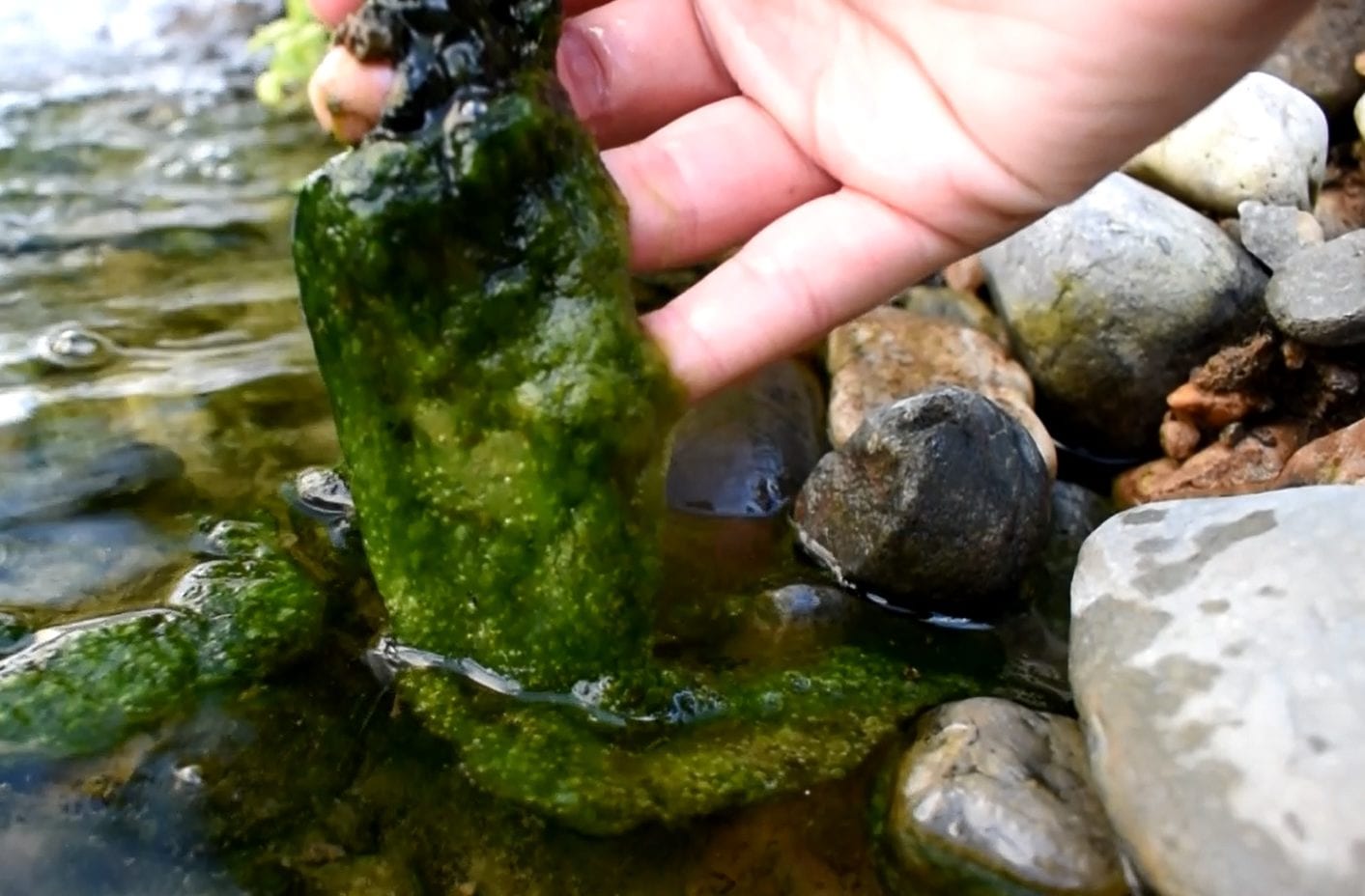Introduction:

Image: www.thepondoutlet.com
String algae is an unsightly filamentous algae that plagues many swimming pools, ponds, and lakes. Instead of forming a dense mat on the water’s surface like other algae, string algae floats freely in long, stringy clumps, often entangled with each other. This not only ruins the aesthetics of the water body but can also create a breeding ground for bacteria and pose health risks. In this comprehensive guide, we will delve into the world of string algae, exploring its causes, methods of prevention, and effective ways to eliminate it from your aquatic environment.
Understanding String Algae:
String algae (Spirogyra) belongs to a group of green algae characterized by their long, unbranched filaments. These filaments are composed of individual cylindrical cells connected end-to-end. String algae can reach lengths of up to several feet and often form tangled masses that float near the water’s surface. The slippery texture and filamentous nature of string algae make it difficult to remove by physical means.
Causes of String Algae:
The presence of string algae indicates an imbalance in the aquatic ecosystem. Optimal conditions for excessive string algae growth include:
- Excess Nutrients: Elevated levels of nitrates and phosphates in the water, often due to fertilizer runoff or decaying plant matter, stimulate string algae growth.
- Low Chlorine or pH: String algae thrive in low chlorine levels and prefer slightly alkaline water. Maintaining pH below 7.2 and regular chlorination can help prevent algae blooms.
- Warm Temperature: String algae flourish in warm water temperatures, especially between 68°F (20°C) and 86°F (30°C). When water temperatures rise, algae growth becomes more rampant.
- Sunlight: Like all algae, string algae require sunlight for photosynthesis. Excessive exposure to sunlight, particularly during the summer months, can result in algae blooms.
Prevention of String Algae:
Implementing preventative measures can minimize the risk of string algae infestation:
- Control Nutrient Input: Limit fertilizer use around water bodies and properly dispose of organic waste to prevent nutrient enrichment.
- Maintain Optimal Chlorine Levels: Regularly test and maintain chlorine levels in swimming pools to keep algae at bay.
- Manage pH: Monitor and adjust pH levels to keep them below 7.2. Acidic water helps prevent string algae growth.
- Avoid Overcrowding: Dense aquatic vegetation can shade out string algae, but overcrowding can create a favorable environment for algae growth.
- Provide Shade: Installing shade sails or floating plants can reduce sunlight exposure and inhibit algae growth.
Elimination Methods:
If string algae has already taken hold, there are several effective methods to eliminate it:
- Manual Removal: Using a specialized algae brush, gently brush away string algae from the pool surfaces and filter them out. This method requires regular maintenance.
- Chemical Treatment: Algaecides containing copper sulfate or quaternary ammonium compounds can effectively kill string algae on contact. Follow the manufacturer’s instructions carefully for dosage and application.
- UV Treatment: Ultraviolet disinfection systems continuously bombard water with high-energy UV rays, damaging the DNA of algae cells and preventing their growth.
- Biological Control: Introducing natural predators of string algae, such as grass carp, can help control excessive algae growth in ponds and lakes.
- Shock Chlorination: In swimming pools, a sudden increase in chlorine levels, known as shock chlorination, can rapidly eliminate string algae.
Conclusion:
String algae can be an unsightly and frustrating problem in aquatic environments. By understanding its causes and employing preventive measures, you can minimize the risk of infestation. When string algae does occur, various effective methods are available for its elimination. Implementing a comprehensive approach, combining prevention and treatment strategies, is essential for maintaining a healthy and aesthetically pleasing aquatic ecosystem.

Image: splashsupplyco.com
How To Get Rid Of String Algae